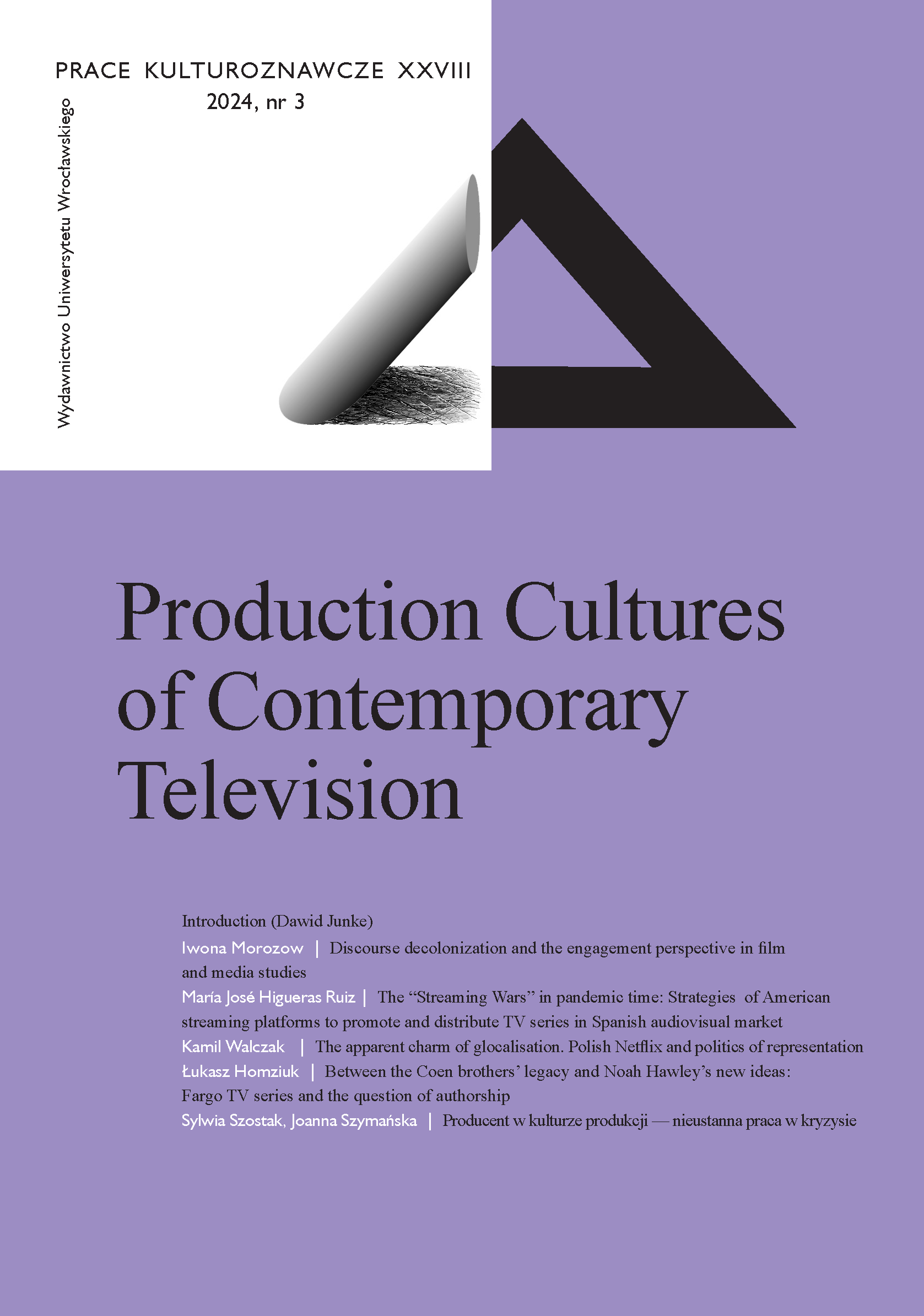

Artykuły

In this article Netflix is presented in the context of its global and glocal activities in Polish media market. Glocalisation is understood as local execution of global interests. Author regards Netflix Originals—productions identified by the streaming giant’s logo—as glocal strategy that creates specific criteria of representation. Analysis of Polish Netflix Originals enables locating inconsistencies, falsehoods and doubtful interpretations of local identity, including the identity of the members of the LGBT community. In order to better understand and problematise key issues of representation two paradoxical terms are introduced: exotic domestication and universal particularity.
Duffy B.E., Poell T., Nieborg D.B., “Platform practices in the cultural industries: Creativity, labor, and citizenship”, Social Media + Society 2019, vol. 5, no. 4, pp. 1–8.
Jenkins H., Convergence Culture: Where Old and New Media Collide, New York 2006.
Lotz A.D., Eklund O., Soroka S., “Netflix, library analysis, and globalization: rethinking mass media flows”, Journal of Communication 2022, vol. 72, no. 4, pp. 511–521.
Lotz A.D., “In between the global and the local: Mapping the geographies of Netflix as a multi-national service”, International Journal of Cultural Studies 2020, vol. 24, no. 2, pp. 195–215.
Lotz A.D., “Profit, not free speech, governs media companies’ decisions on controversy”, The Conversation 2018, https://theconversation.com/profit-not-free-speech-governs-media-companies-decisions-on-controversy-101292.
Lury C., Lash S., Global Culture Industry: The Mediation of Things, Cambridge 2007.
Matthew J.R., “Netflix and the design of the audience. The homogeneous constraints of data-driven personalization”, MedieKultur 2020, vol. 36, no. 69, pp. 52–70.
Straubhaar J.D., “Beyond media imperialism: Assymetrical interdependence and cultural proximity”, Critical Studies in Mass Communication 1991, vol. 8, no. 1, pp. 39–59.
Strauhbaar J. D., World Television. From Global to Local, Thousand Oakes 2007.
Szostak S., “Serwisy streamingowe a lokalna branża audiowizualna — mapowanie wpływu Netflixa na polski sektor produkcji”, Images: The International Journal of European Film, Performing Arts and Audiovisual Communication 2023, vol. 35, no. 44, pp. 204–226.
Wang Y., Weng X., “Analysis on how ‘globalization’ affect Netflix to cultural diffusion”, [in:] 2022 8th International Conference on Humanities and Social Science Research (ICHSSR 2022), pp. 2082–2086.
Venuti L., The Translator’s Invisibility. A History of Translation, Routledge, London–New York 2008.
Falco A., Gandhi S., “The Rainbow Business”, Eidos 2020, vol. 9, no. 1, pp. 104–107.
W. Peters, “Pink Dollars, White Collars: Queer as Folk, Valuable Viewers, and the Price of Gay TV”, Critical Studies in Media Communication 2011, vol. 28, no. 3, pp. 193–212.
Oakenfull G.W., “Lesbian consumers and the myth of an LGBT consumer market”, [in:] Feminist Perspectives on Advertising: What’s the Big Idea?, ed. K. Golombisky, Lanham 2018, pp. 103–122.
Gluckman A., Reed B., “The gay marketing moment”, [in:] Queer Economics. A Reader, eds. J. Jacobsen, A. Zeller, London–New York 2008, pp. 297–303.